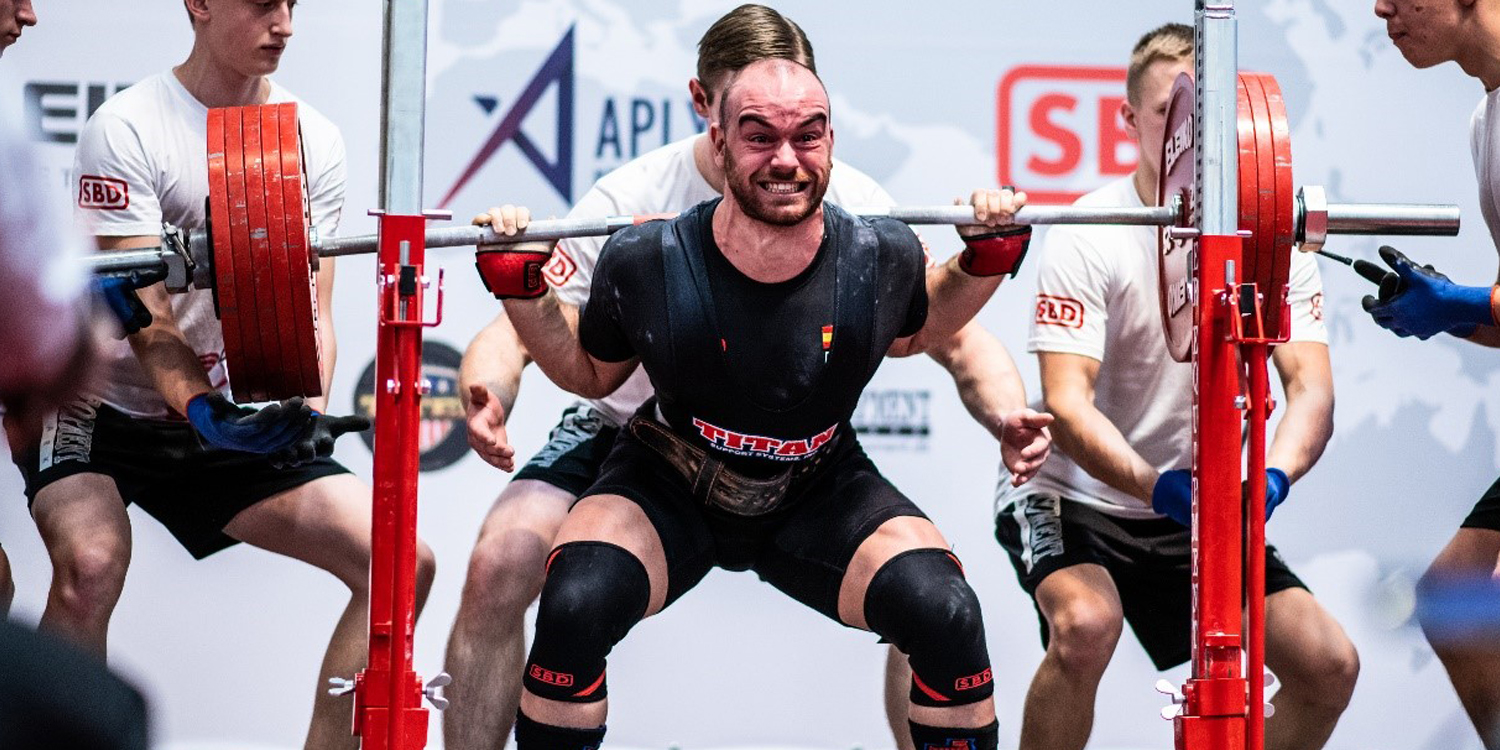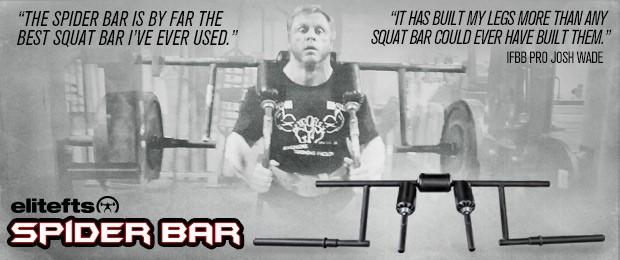
Everybody talks about The Grind, but what is it exactly? "Grinding" is a term that refers to the ability to fight until the successful completion of a lift. Giving your best to a heavy single, or to the last rep of a set to failure. We are talking about those reps close to the 1RM for that day when technique starts to flail. Yet you keep pushing even though your body is begging you to stop. Simply put, grinding is fighting.
This is one of the most important skills to develop for a powerlifter (although it applies to strongmen, weightlifters, and CrossFitters) since it allows us to turn projected rep maxes into reality, truly expressing our 1 RM (our maximum force limit).
How and Why The Grind Happens
When facing maximum loads, the central nervous system (CNS) wakes up and recruits all of our muscle fibers. But even at maximum repetition attempts, they eventually become fatigued.
Just before failure, the CNS begins to send signals, indicating that the “safe zone” limit has been exceeded. As a consequence, synaptic connections begin to fail, muscle spasms take place, and you start shaking uncontrollably. The movement slows down to almost a complete halt, technique deteriorates, and the bar path becomes altered.
When to Start Grinding—The Beginner vs. the Advanced Powerlifter
If we look at novice lifters, we can observe how they perform submaximal lifts during their last warm-up sets. Let's say that the projected 1RM for the day is a 15kg increase. After a jump of only 7.5kg, they fail the lift without a fight. The speed drop is neither proportional to the intensity increase, nor linear, but sharp. Of course, this is also directly related to the lifter’s ability to use proper technique with heavy loads.
However, an experienced lifter may make it seem like his previous attempt was almost failed. He can go on to achieve the 15kg jump to the projected 1RM by fighting through the sticking point. The speed drop is more linear as intensity increases.
RELATED: Finding A Personal Record Through Consistency
Mindset is a determining factor when it comes to improving The Grind. You need to break certain barriers, learn that sometimes what your brain tells you is a lie. Stop trying harder than necessary. Our body has multiple protective mechanisms to maintain physical integrity and save energy. The brain prefers to avoid injuries and preserve its resources for situations of alarm or survival, fight or flight. Knowing how to divert these signals and overcome them is one of the most difficult things to achieve.
Let's Look at Eddie Hall
Some of the most daring lifters (Eddie Hall with his legendary 500kg deadlift) train to enter a state of hypnosis. Some have gone on to even hire a hypnotist to teach them how to dive into high-stress situations. In Eddie Hall’s case, he has explained how he imagined that the devil came to kidnap his daughter and that in order to save her he had to successfully complete the lift.
Coming back to the beginners, one of the strategies we use with our novice lifters is to ask them whether they have ever failed a lift. If the answer is affirmative, we program a few extra kilograms and repetitions to failure without the lifters knowing it. If we told them, the experience would not be lived as “real” or recorded in the system in the same way. Then we get them to understand that nothing dangerous happens if they fail. We also teach them how to act in the event of failure by using the safety pins or throwing the barbell and getting out of its way, as well as how to face the whole thing from a psychological viewpoint.
Bodybuilders and The Grind
If we think of bodybuilders and grinding, one of the details that separate amateurs from pros (along with the famous mind-muscle connection) is this same grinding ability applied to hypertrophy ranges (6-20 repetitions) and isolation exercises. They can suffer much more than regular people in these exercise and increase the limit of muscle failure with advanced hypertrophy techniques.
However, rarely you will see a bodybuilder grinding through any of the big three as powerlifters do, which seems logical since they don’t perform these efforts, intensities, or exercises as often as the latter. In addition, fighting for maxes in the power lifts is not the goal of most bodybuilders, so they don’t devote much time to training that capacity. For powerlifters, this detail is of great interest, since most do not favor isolation exercises (or anything that is not basic, compound, and heavy), at least not in the same way and with the same importance that a bodybuilder lends to them. This limits muscle mass gains and the potential to maximize hypertrophy during the off-season blocks.
If we manage to educate strength athletes in this capacity to suffer and fight, not only in the big three but also in auxiliary exercises when necessary, we will achieve the “power zone” (our ideal body weight and muscle mass) faster, reap more gains, and cut down garbage training volume.
Post-Injury Grinding Ability
One of the biggest limitations after a major and long-lasting injury is precisely the fear of failure, of trying too hard and hurting yourself once more—a completely rational and logical fear, but one that we must work on. After an injury, we present a hypervigilant attitude towards the affected area, and this means our proprioception can become impaired there as well as in related areas. Although this is a defensive mechanism and it is always better to be conservative, we must understand that in the long run, it is a factor that will certainly limit our progress.
Finally, when analyzing the elite lifters of different training methodologies, we can see two completely different extremes:
- We have Westside Barbell athletes who are famous for being able to appreciate the ability to fight and suffer under the heaviest loads.
- On the other hand, we have the Russian school. These lifters are famous for lifting their third attempts with amazing ease. Although it is true that the Russian school promotes a conservative approach of not risking any attempt and seeking 9/9 valid attempts at competition, their last attempts seem so easy they could pass as an opener. All this is directly related to the training methodology.
How to Improve The Grind
Some of the strategies to improve your fighting capacity are:
- Patience by maintaining good technique at heavy loads requires a long training process
- Removing the fear of injury from your mind
- Lifting heavy with greater frequency (this is a double-edged sword)
- Testing your RM in different variations of the main lifts
- Using accommodating resistance (bands and chains) that soften the force curve and the sticking point throughout the attempt, making us strive not only in the critical moments but throughout the whole lift
- Use variations with pauses in the sticking point to maintain the tension in the different critical points of the lift
And finally, and perhaps the option that gives the most bang for your buck:
- Perform more reps. This means increasing the character of the effort in peaking. For example, instead of working to two to three repetitions, you could do it to four. Another option is implementing As Many Reps As Possible (AMRAP). During the last repetitions of an AMRAP the speed is very similar to that in 1RM attempt and even lower. This helps us to adapt to sustain tension under those longer specific times.
Who Shouldn't Grind
If you go to the gym to make friends get healthier with no competitive goals, you shouldn't grind. You don't need to focus your attention on taking your body to the limit.
This is a quality reserved for elite athletes, for those willing to suffer and give everything to achieve their goal. If an amateur tries to imitate such a lifter, the only thing he will get is an injury. He may not be prepared to face a maximum effort or to have the appropriate discipline to recover.

Rubén started powerlifting at the age of 16. He is currently ranked fifth in the world in the -93kg weight class (Helsinborg, IPF Worlds 2019). Rubén is the CEO of RV Strength, a sports science graduate, and holds a master’s degree in Elite Sports Performance. He is a lecturer at several universities and coaches some of Spain’s top powerlifters.









